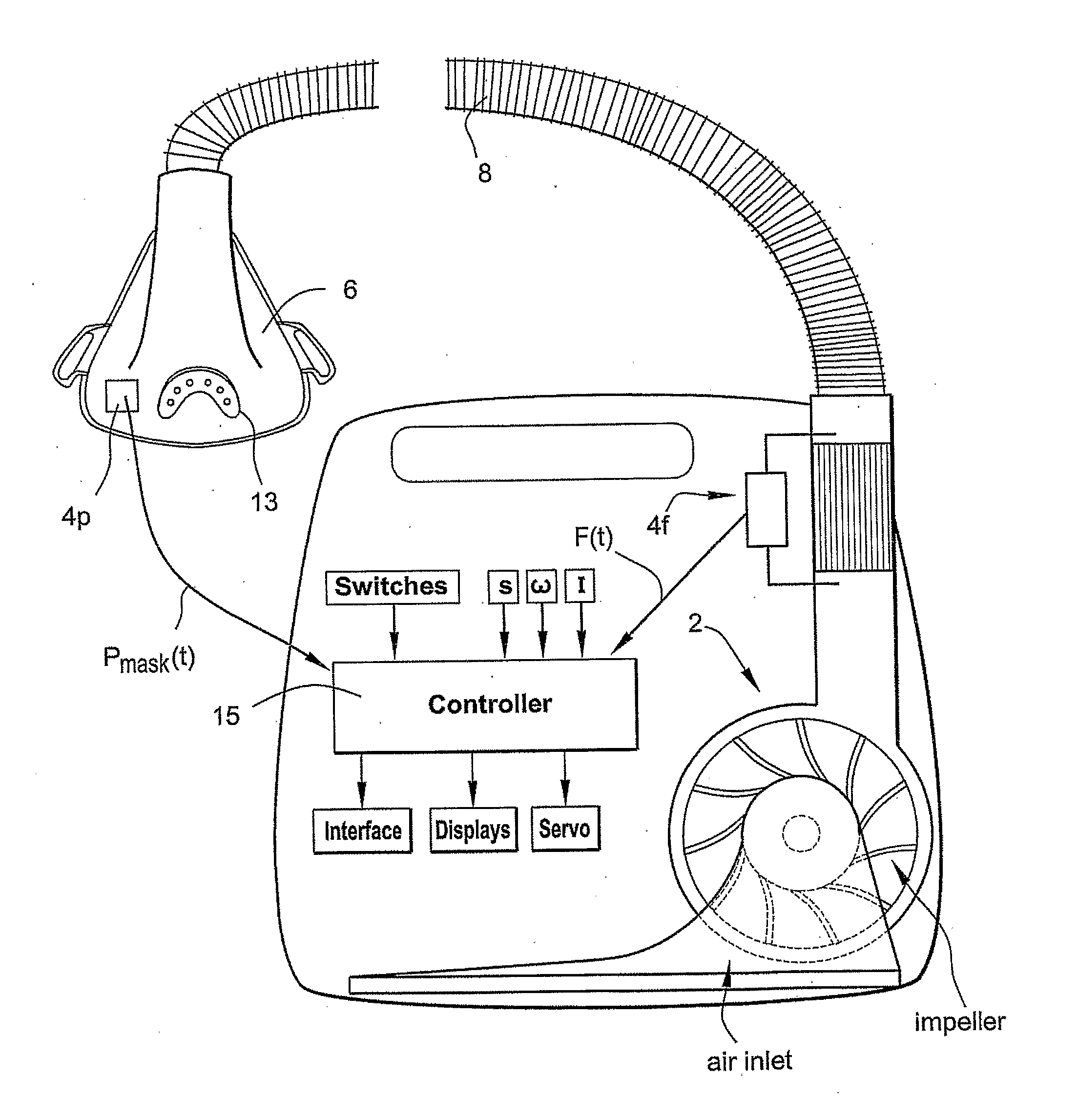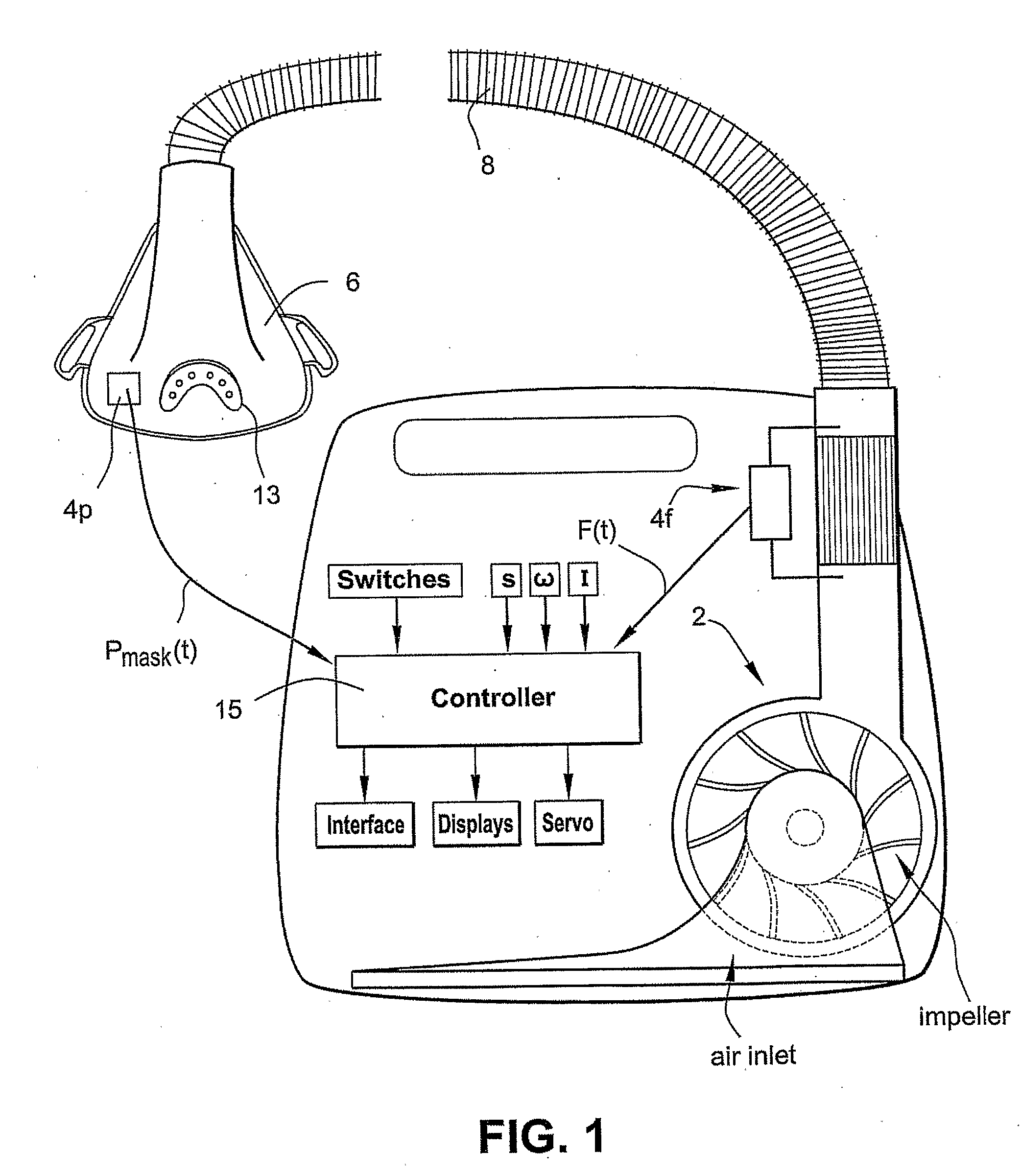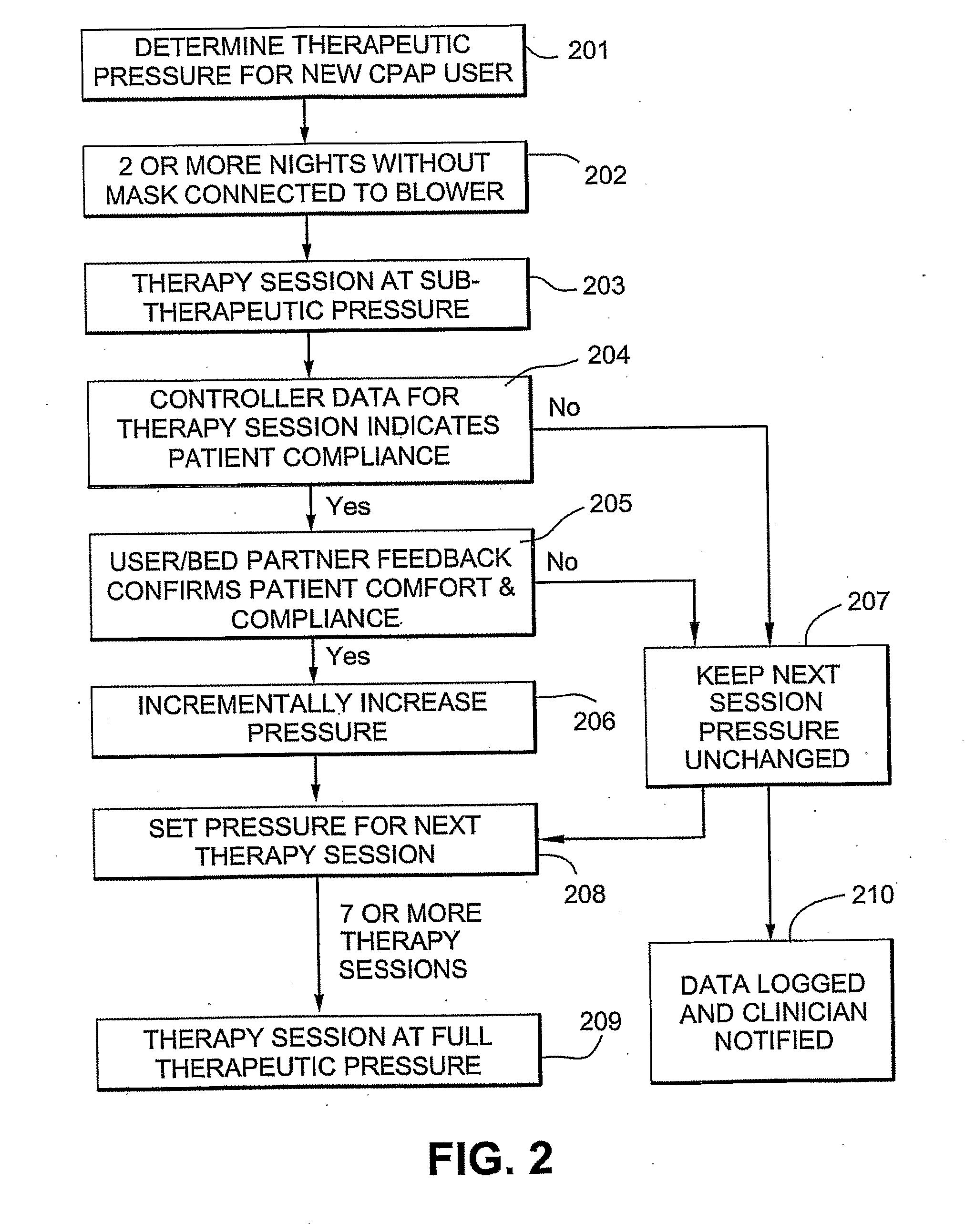Acclimatization therapy for first time cpap and niv users
a technology of cpap and niv, which is applied in the field of mechanical ventilation of sleep disordered breathing, can solve the problems of non-compliance with therapy, uncomfortable patients, and uncomfortable above devices, and achieve the effect of decreasing the treatment pressur
- Summary
- Abstract
- Description
- Claims
- Application Information
AI Technical Summary
Benefits of technology
Problems solved by technology
Method used
Image
Examples
Embodiment Construction
Hardware
[0060]A positive airway pressure (PAP) device in accordance with an embodiment of the invention includes a blower and blower-controller. The blower can deliver a supply of air at positive pressure 2-40 cmH2O, but generally in the range of 4-20 cmH2O to a patient interface via an air delivery conduit.
[0061]The device also includes a flow sensor to measure the flow of air along the conduit, and pressure sensors to measure the pressure of air at the blower outlet.
[0062]In one form, the device alternatively includes an additional pressure sensor to detect the pressure in the patient interface.
[0063]For example, FIG. 1 illustrates a ventilator device according to an embodiment of the invention. As illustrated, the ventilator device may include a servo-controlled blower 2, a flow sensor 4f, pressure sensor 4p, a mask 6, and an air delivery conduit 8 for connection between the blower 2 and the mask 6. Exhaust gas is vented via exhaust 13.
[0064]Mask flow may be measured by a flow se...
PUM
 Login to View More
Login to View More Abstract
Description
Claims
Application Information
 Login to View More
Login to View More - R&D
- Intellectual Property
- Life Sciences
- Materials
- Tech Scout
- Unparalleled Data Quality
- Higher Quality Content
- 60% Fewer Hallucinations
Browse by: Latest US Patents, China's latest patents, Technical Efficacy Thesaurus, Application Domain, Technology Topic, Popular Technical Reports.
© 2025 PatSnap. All rights reserved.Legal|Privacy policy|Modern Slavery Act Transparency Statement|Sitemap|About US| Contact US: help@patsnap.com



